Stephen C Schulz
age ~63
from Lee, NH
- Also known as:
-
- Stephen Jt Schulz
- Stephen C Schultz
- Steven C Shultz
- Phone and address:
- 17 Sheep Rd, Lee, NH 03824
Stephen Schulz Phones & Addresses
- 17 Sheep Rd, Durham, NH 03824
- 69 Newtown Plains Rd, Durham, NH 03824
- Lee, NH
- Valatie, NY
- Barrington, NH
- Center Ossipee, NH
- Tewksbury, MA
- Benicia, CA
- Piscataway, NJ
- Princeton, NJ
Work
-
Company:X-body biosciences / sru biosystems2002
-
Position:Principle process development engineer & director
Education
-
School / High School:Wayne State University1989
-
Specialities:Industrial Engineering
Name / Title
Company / Classification
Phones & Addresses
Director of Operations
Sru Biosystems, Inc
Commercial Physical Research
Commercial Physical Research
14 Gill St, Woburn, MA 01801
100 Beaver St, Waltham, MA 02453
7819337255
100 Beaver St, Waltham, MA 02453
7819337255
Resumes

Benefits Analyst At Humana
view sourcePosition:
Benefits Analyst at Humana
Location:
Louisville, Kentucky
Industry:
Insurance
Work:
Humana - Louisville, Kentucky Area since Jun 2012
Benefits Analyst
PharMerica Jun 2010 - Jun 2012
Financial Analyst
PharMerica Jun 2010 - Feb 2011
Business and Pricing Analyst
Benefits Analyst
PharMerica Jun 2010 - Jun 2012
Financial Analyst
PharMerica Jun 2010 - Feb 2011
Business and Pricing Analyst
Education:
Bellarmine University 2010 - 2012
MBA University of Kentucky 2003 - 2008
B.A., Finance Male High School
MBA University of Kentucky 2003 - 2008
B.A., Finance Male High School

Stephen Schulz
view sourceWork:
X-Body Biosciences / SRU Biosystems
2002 to Present
Principle Process Development Engineer & Director 3M Touch Systems
Methuen, MA
1997 to 2002
Product Development Specialist and Sr. Process Engineer SAGE Electrochromics Inc
Piscataway, NJ
1994 to 1997
Manager of Pilot Development and Operations BOC Coating Technology
Concord, CA
1990 to 1994
Sr. Scientist Ford Motor Company's Glass Division
Dearborn, MI
1988 to 1990
Research Engineer Tufts University's Electro-Optics Technology Center
Medford, MA
1985 to 1988
Salaried Research/Teaching Assistant ME Dept., The University of Melbourne, Australia
1985 to 1985
Intern
2002 to Present
Principle Process Development Engineer & Director 3M Touch Systems
Methuen, MA
1997 to 2002
Product Development Specialist and Sr. Process Engineer SAGE Electrochromics Inc
Piscataway, NJ
1994 to 1997
Manager of Pilot Development and Operations BOC Coating Technology
Concord, CA
1990 to 1994
Sr. Scientist Ford Motor Company's Glass Division
Dearborn, MI
1988 to 1990
Research Engineer Tufts University's Electro-Optics Technology Center
Medford, MA
1985 to 1988
Salaried Research/Teaching Assistant ME Dept., The University of Melbourne, Australia
1985 to 1985
Intern
Education:
Wayne State University
1989 to 1990
Industrial Engineering Tufts University, EE Department
Medford, MA
May 1988
M.S. in Electro-Optics University of Michigan, School of Engineering
Ann Arbor, MI
Jan 1985
B.S.E. in Engineering Physics
1989 to 1990
Industrial Engineering Tufts University, EE Department
Medford, MA
May 1988
M.S. in Electro-Optics University of Michigan, School of Engineering
Ann Arbor, MI
Jan 1985
B.S.E. in Engineering Physics

Process Engineering Professional
view sourcePosition:
Principal Process Engineer / VP at X-Body Biosciences
Location:
United States
Industry:
Nanotechnology
Work:
X-Body Biosciences since 2012
Principal Process Engineer / VP
SRU Biosystems - Woburn MA 2002 - Dec 2011
Principal Process Development Engineer / Director Manufacturing
3M Touch Systems ( formerly MicroTouch Systems) 1997 - 2002
Sr. Process Engineer
SAGE Electrochromics, Inc. 1994 - 1997
Manager Pilot Development and Operations
BOC Coating Technology 1990 - 1994
Sr. Process Engineer
Principal Process Engineer / VP
SRU Biosystems - Woburn MA 2002 - Dec 2011
Principal Process Development Engineer / Director Manufacturing
3M Touch Systems ( formerly MicroTouch Systems) 1997 - 2002
Sr. Process Engineer
SAGE Electrochromics, Inc. 1994 - 1997
Manager Pilot Development and Operations
BOC Coating Technology 1990 - 1994
Sr. Process Engineer
Education:
Tufts University 1985 - 1988
University of Michigan 1980 - 1984
University of Michigan 1980 - 1984
Skills:
Thin Films
Design of Experiments
Process Development
Experimental Design
Analysis
Structures
Materials Science
Engineering
Manufacturing
Coatings
Commercialization
MEMS
R&D
Characterization
Nanotechnology
Chemistry
Biotechnology
Technology Transfer
Spectroscopy
Scanning Electron Microscopy
Polymers
Design of Experiments
Process Development
Experimental Design
Analysis
Structures
Materials Science
Engineering
Manufacturing
Coatings
Commercialization
MEMS
R&D
Characterization
Nanotechnology
Chemistry
Biotechnology
Technology Transfer
Spectroscopy
Scanning Electron Microscopy
Polymers
Vehicle Records
-
Stephen Schulz
view source -
Address:17 Sheep Rd, Lee, NH 03861
-
VIN:2T1BR32E77C752707
-
Make:TOYOTA
-
Model:COROLLA
-
Year:2007
Us Patents
-
Flexible Capacitive Touch Sensor
view source -
US Patent:6819316, Nov 16, 2004
-
Filed:Apr 17, 2001
-
Appl. No.:09/836634
-
Inventors:Stephen C. Schulz - Tewksbury MA
Anthony F. Chernefsky - Dracut MA
Bernard Geaghan - Salem NH -
Assignee:3M Innovative Properties Company - St. Paul MN
-
International Classification:G09G 500
-
US Classification:345174, 345178, 345179, 178 1801, 178 1806, 178 1805, 178 1807
-
Abstract:A flexible, capacitive touch sensor, and a method of manufacturing a plurality of such touch sensors, are provided. The capacitive touch sensor comprises a thin, flexible, transparent, insulating substrate. A thin, flexible, transparent layer of resistive material is applied to one side of the substrate, and a thin, flexible, transparent, pressure-sensitive layer of adhesive material is applied to the substrates other side. A releasable sheet may cover this adhesive layer. A plurality of thin, flexible electrodes, electrical leads and conductive areas are applied to the resistive layer. A thin, flexible, transparent layer of protective material protects the touch sensors active touch area. Compounds may be added to this protective layer to enhance its conductivity and lubricity. A reel-to-reel process for manufacturing a plurality of such capacitive touch sensors also is described.
-
Multifunctional Multilayer Optical Film
view source -
US Patent:7151532, Dec 19, 2006
-
Filed:Aug 9, 2002
-
Appl. No.:10/216507
-
Inventors:Stephen C. Schulz - Lee NH, US
-
Assignee:3M Innovative Properties Company - St. Paul MN
-
International Classification:G09G 5/00
-
US Classification:345173, 345179
-
Abstract:Optical component for use in a touch sensor and method of fabrication of same are disclosed. Optical component includes a multilayer optical film at least some layers of which are fabricated on the same manufacturing line and using the same manufacturing method. Each layer of the multilayer optical film is designed primarily to provide a desired associated property.
-
Touch Sensor
view source -
US Patent:7154481, Dec 26, 2006
-
Filed:Jun 25, 2002
-
Appl. No.:10/183876
-
Inventors:Elisa M. Cross - Woodbury MN, US
Robert S. Moshrefzadeh - Oakdale MN, US
Anthony F. Chernefsky - Dracut MA, US
Frank J. Bottari - Acton MA, US
Craig A. Cordeiro - Westford MA, US
Stephen C. Schulz - Lee NH, US
Michael J. Kardauskas - Billerica MA, US -
Assignee:3M Innovative Properties Company - St. Paul MN
-
International Classification:G09G 5/00
-
US Classification:345173, 345156, 345157, 345174, 345179, 178 1801, 178 1802, 178 1803, 178 1805, 178 1901
-
Abstract:A touch sensing method and a touch sensing device are described for sensing a location of a touch. When the touch sensing device is touched, a first conductive layer disposed on a supporting layer is deflected toward a second conductive layer. The touch location is determined by sensing the change in capacitance at the location of the touch. A change in capacitance at the touch location is sensed by driving one of the conductive layers with an electrical signal referenced to the other conductive layer and measuring the current flow between the conductive layers. The sensed change in capacitance is greater than a change in the external capacitance of the touch sensor.
-
Optimized Grating Based Biosensor And Substrate Combination
view source -
US Patent:7162125, Jan 9, 2007
-
Filed:Aug 18, 2005
-
Appl. No.:11/207442
-
Inventors:Stephen Schulz - Lee NH, US
-
Assignee:SRU Biosystems, Inc. - Woburn MA
-
International Classification:G02B 6/34
G02B 6/26
C12Q 1/68
C12M 1/34 -
US Classification:385 37, 385 12, 385147, 435 6, 4352887
-
Abstract:A grating-based biosensor is disclosed where the biosensor is constructed and arranged such that the grating lines of the sensor align with an optical axis of a birefringent substrate, so as to improve resonance peak uniformity. Methods of manufacturing biosensors to provide alignment of the grating lines with the optical axes of a birefringent substrate are also disclosed. One embodiment uses a grating master wafer to form a grating on a continuous web of substrate material. The grating master wafer is rotated relative to the web until the lines of the grating in the master wafer are in substantial alignment with the optical axis of the web. A UV curable material is applied to the wafer and cured in place to form the grating on the surface of the substrate web. With a web of some preferred materials, such as PET film, one need only determine the optical axis orientation once for a given web since the optical axis orientation is essentially constant along the length of the web.
-
Biosensor Substrate Structure For Reducing The Effects Of Optical Interference
view source -
US Patent:7197198, Mar 27, 2007
-
Filed:Aug 18, 2005
-
Appl. No.:11/207491
-
Inventors:Stephen C. Schulz - Lee NH, US
Brian T. Cunningham - Champaign IL, US -
Assignee:SRU Biosystems, Inc. - Woburn MA
-
International Classification:G02B 6/00
-
US Classification:385 12, 385 13
-
Abstract:A biosensor substrate structure is provided that eliminates the effects of optical interference of light reflected from a substrate/air interface with light reflected by the biosensor's active surface by incorporating a roughened or “non-specular” surface on the lower surface of the substrate opposite the grating. One can generate a useful non-specular or “anti-interference” surface in a number of ways in accordance with this disclosure, including (1) by adding a coating of optically diffuse material, such as UV cured acrylate, to the sensor substrate, (2) etching or otherwise roughening the surface of the sensor substrate, or (3) applying a grating structure to the surface.
-
Touch Panel System And Method For Distinguishing Multiple Touch Inputs
view source -
US Patent:7254775, Aug 7, 2007
-
Filed:Oct 3, 2001
-
Appl. No.:09/970474
-
Inventors:Bernard O. Geaghan - Salem MA, US
Robert S. Moshrefzadeh - Oakdale MN, US
Craig A. Cordeiro - Westford MA, US
Edward S. Hagermoser - Lancaster MA, US
James J. Hart - Georgetown MA, US
Paul M. Hatin - Londonderry NH, US
Karl P. Hauck - Somerville MA, US
Stephen C. Schulz - Lee NH, US
Gordon F. Taylor - Bolton MA, US -
Assignee:3M Innovative Properties Company - Saint Paul MN
-
International Classification:G06F 9/00
-
US Classification:715701, 345173, 345179, 178 1801, 715702, 715863, 715856, 715857, 715858, 715859, 715860, 715861, 715862
-
Abstract:Touch panel systems and methods are disclosed that can distinguish temporally overlapping touch inputs from single touch inputs so that valid touch position coordinates can be determined. Touch panel systems and methods of the present invention can distinguish overlapping touches by comparing signal magnitudes to specified thresholds, by comparing the rates of change of signal magnitudes or measured positions to determined parameters, by locating the proximity a calculated location to icons or other such active areas, and the like. Because touch panel systems and methods of the present invention can discriminate single touches from double touches, they can be used in multiple user applications such as multiplayer games as well as in applications that may be subject to rapidly successive or overlapping touch inputs.
-
Optimized Grating Based Biosensor And Substrate Combination
view source -
US Patent:7620276, Nov 17, 2009
-
Filed:Oct 31, 2006
-
Appl. No.:11/591160
-
Inventors:Stephen C. Schulz - Lee NH, US
-
Assignee:SRU Biosystems, Inc. - Woburn MA
-
International Classification:G02B 6/34
G02B 6/00
G02B 6/12
G02B 6/26
G01J 3/28
G01J 4/00 -
US Classification:385 37, 385 12, 385 13, 385 14, 385 15, 385147, 356327, 356328, 356364, 356369
-
Abstract:A grating-based biosensor is disclosed where the biosensor is constructed and arranged such that the grating lines of the sensor align with an optical axis of a birefringent substrate, so as to improve resonance peak uniformity. Methods of manufacturing biosensors to provide alignment of the grating lines with the optical axes of a birefringent substrate are also disclosed. One embodiment uses a grating master wafer to form a grating on a continuous web of substrate material. The grating master wafer is rotated relative to the web until the lines of the grating in the master wafer are in substantial alignment with the optical axis of the web. A UV curable material is applied to the wafer and cured in place to form the grating on the surface of the substrate web. With a web of some preferred materials, such as PET film, one need only determine the optical axis orientation once for a given web since the optical axis orientation is essentially constant along the length of the web.
-
Grating-Based Sensor Combining Label-Free Binding Detection And Fluorescence Amplification And Readout System For Sensor
view source -
US Patent:7863052, Jan 4, 2011
-
Filed:Jul 20, 2006
-
Appl. No.:11/490556
-
Inventors:Stephen C. Schulz - Lee NH, US
Brian T. Cunningham - Champaign IL, US
Lance G. Laing - Belmont MA, US
Peter Y. Li - Andover MA, US
Brant Binder - Chestnut Hill MA, US
Gangadhar Jogikalmath - Cambridge MA, US
Alex Borsody - Lowell MA, US -
Assignee:SRU Biosystems, Inc. - Woburn MA
-
International Classification:G01N 33/551
-
US Classification:436164, 436172, 436518, 436524, 436525, 436527, 436805
-
Abstract:A grating-based sensor is disclosed that has a grating structure constructed and designed for both evanescent resonance (ER) fluorescence detection and label-free detection applications. Some embodiments are disclosed which are optimized for ER detection in an air mode, in which the sample is dry. Other embodiments are optimized for ER detection in liquid mode, in which the sample is suspended in liquid medium such as water. One and two-dimensional gratings are also disclosed, including gratings characterized by unit cells with central posts, central holes, and two-level, two-dimensional gratings. A readout system for such sensors is also disclosed. One embodiment includes a first light source optimized for collecting label-free detection data, a second light source optimized for collecting ER fluorescence amplification data, and at least one detector. In one embodiment, the detector is an imaging system and includes a CCD camera for collecting both ER and label-free data. In other embodiments, the at least one detector takes the form of a spectrometer for collection of label-free data and a photomultiplier for collecting ER data.
Isbn (Books And Publications)

Myspace
Youtube
Plaxo

Stephen Schulz
view sourceSRU Biosystems
News

Holland-Zeeland Primary Election Results
view source- For the open state 80th House District seat, Cindy Gamrat won the GOP Primary with 3,836 votes (41%), followed by Mary Whiteford (2,738), Stephen Schulz (2,432) and Randy Brink (419). She will face Democrat Geoff Parker in the November 4th General Election.
- Date: Aug 06, 2014
- Category: U.S.
- Source: Google
Classmates

Stephen Schulz
view sourceSchools:
McQuaid Jesuit High School Rochester NY 1956-1960
Community:
Donald Gelo, Dan Hill, Michelle Ciufo, Connie Head

Stephen Schulz
view sourceSchools:
Northwestern High School Hyattsville MD 1972-1976

Lewiston-Porter High Scho...
view sourceGraduates:
Marlene Furman (1950-1954),
Gary Johnson (1965-1969),
stephen schulz (1980-1984),
James Wieland (1969-1973)
Gary Johnson (1965-1969),
stephen schulz (1980-1984),
James Wieland (1969-1973)

Muscatine High School, Mu...
view sourceGraduates:
cynthia buttgen (1970-1974),
stephanie monroe (1989-1993),
Linda Gleaves (1961-1965),
Stephen Schulz (1969-1973),
tammy douglas (1984-1988)
stephanie monroe (1989-1993),
Linda Gleaves (1961-1965),
Stephen Schulz (1969-1973),
tammy douglas (1984-1988)

North St. Paul High Schoo...
view sourceGraduates:
Steve Schulz (1993-1997),
Kelly McLafferty (2004-2008),
Mary Greavu (1967-1971),
Robin Beringer Paley (1979-1983),
Eloise Glass (1961-1965)
Kelly McLafferty (2004-2008),
Mary Greavu (1967-1971),
Robin Beringer Paley (1979-1983),
Eloise Glass (1961-1965)

McQuaid Jesuit High Schoo...
view sourceGraduates:
Stephen Schulz (1956-1960),
Marc Sawyer (1992-1996),
John Walsh (1961-1965),
Frank Cinelli (1974-1978),
Douglas Dailey (1979-1983),
Christopher Hanna (1984-1988)
Marc Sawyer (1992-1996),
John Walsh (1961-1965),
Frank Cinelli (1974-1978),
Douglas Dailey (1979-1983),
Christopher Hanna (1984-1988)

Forest Park High School, ...
view sourceGraduates:
Steve Schulz (1985-1989),
John Holmes (1978-1982),
Rachel Lee (1993-1997),
Nicholas Klotz (2003-2007),
Brian Berg (1976-1980),
Marian Vonderheide (1970-1974)
John Holmes (1978-1982),
Rachel Lee (1993-1997),
Nicholas Klotz (2003-2007),
Brian Berg (1976-1980),
Marian Vonderheide (1970-1974)

Stephen Schulz
view source
Stephen Schulz
view source
Stephen Schulz
view source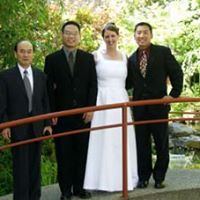
Stephen Schulz
view source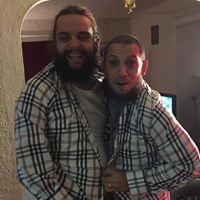
Stephen Schulz
view source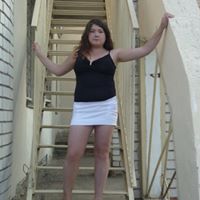
Stephen Schulz
view source
Stephen Schulz
view source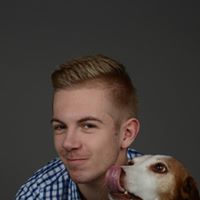
Stephen Schulz
view sourceGoogleplus
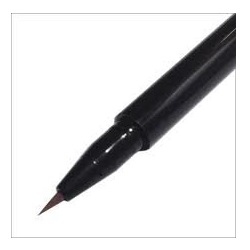
Stephen Schulz

Stephen Schulz
Tagline:
Stephen Schulz Photography

Stephen Schulz
Flickr
Get Report for Stephen C Schulz from Lee, NH, age ~63


















